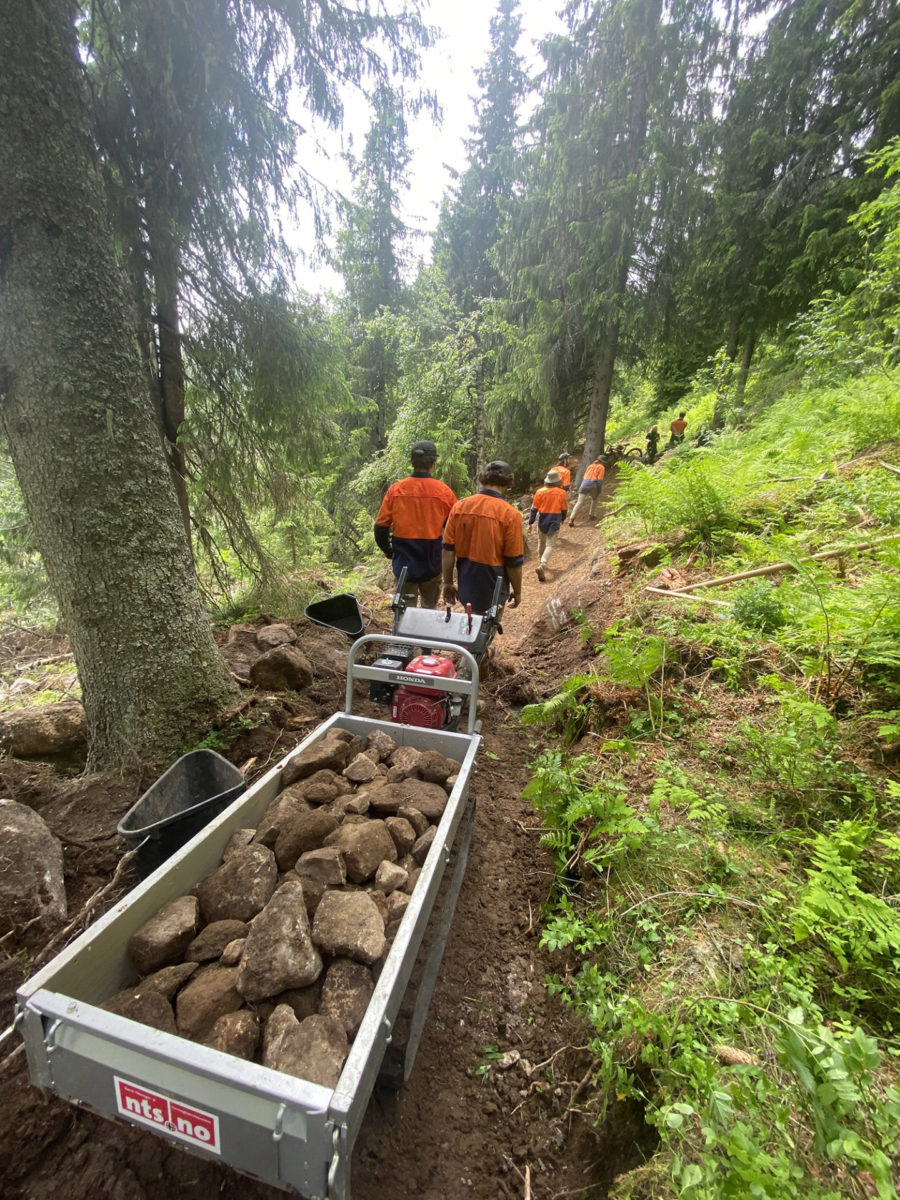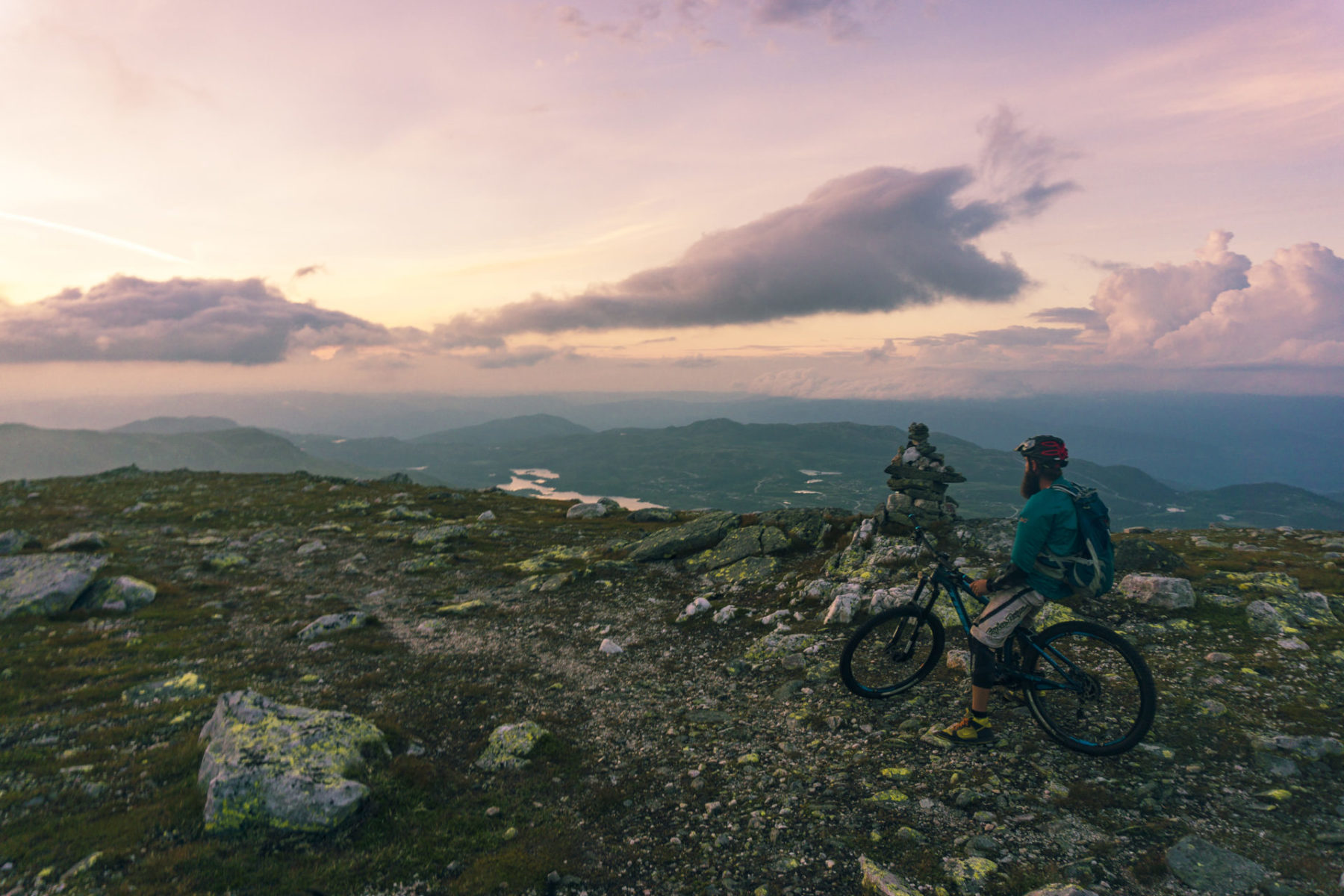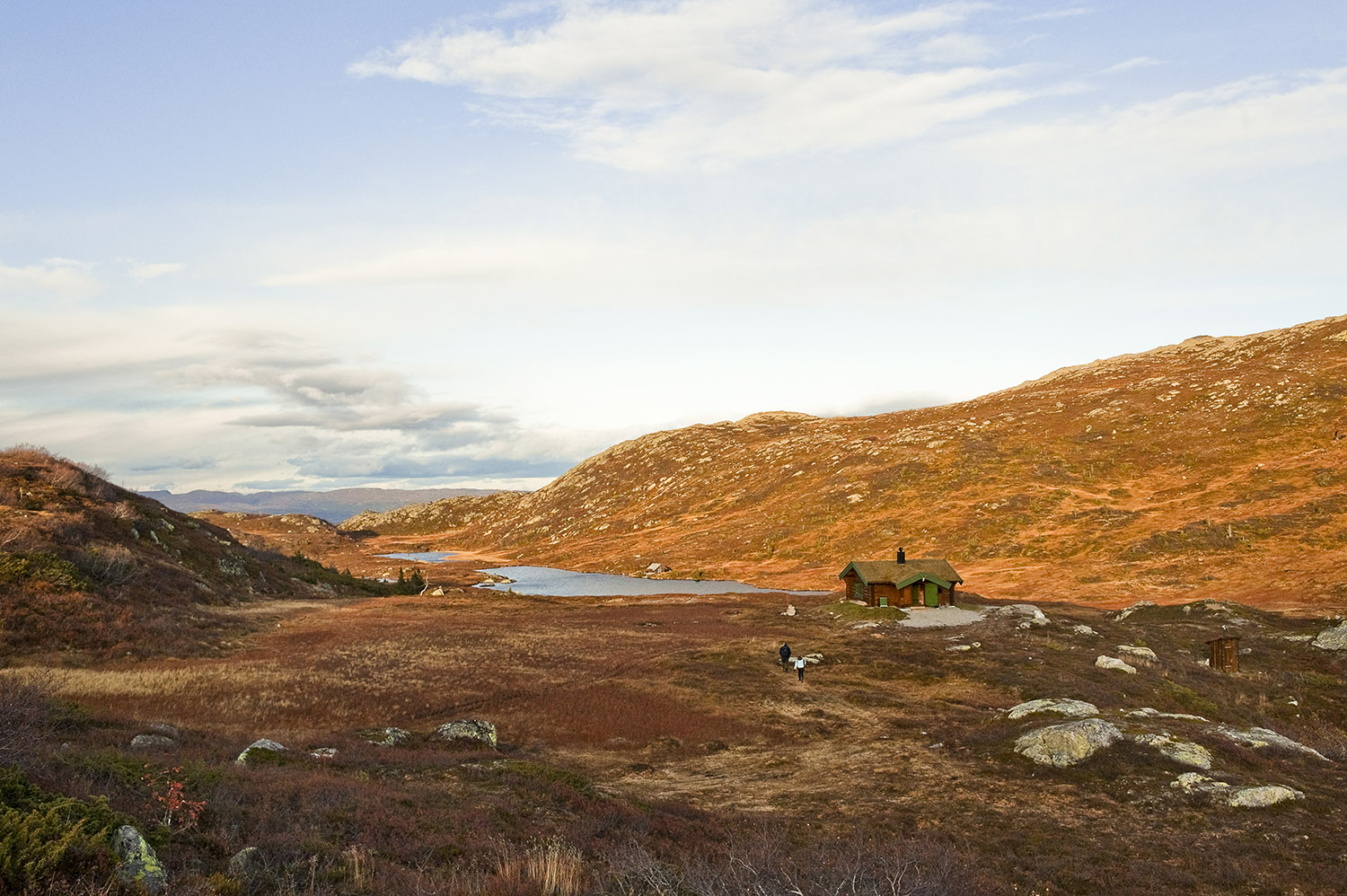According to World Trail founder Glen Jacobs, the hills around Høgevarde ski resort have more mountain lakes and waterfalls than anywhere on earth. World Trail has made the trip to Scandinavia to embark on the construction of what, on completion, will be the biggest trail network in Norway.
“When we look at Les Gets and Morzine, we see the big mountains, and grass fields and big timber structures, and you just go, ‘wow, this is beautiful’ — Høgevarde is on another level. We just fell in love with it. It’s not super high, and where we are now, and down at the bottom around the lake, it will probably be six to eight months a year you can ride here,” says Jacobs.
“There are big rock slabs, and the soil is like chocolate cake, a bit like you get in Bellingham, Washington, and up near the US Canadian Border — it’s absolutely beautiful.”
Related
- Must Ride | Rock’n and Ride’n in Rockhampton, Central QLD
- Rising from the Ashes — Mogo is getting new trails and upgrades to the existing network
- Cairns Trails in Paradise plans to add up to 70km of trails to Smithfield and Kuranda

Høgevarde is situated in the hills above the town of Flå (pronounced “flow,” great name for a town, eh), which is located about 2.5-hours north-west of Oslo. It has been a popular ski touring area for years; however, they are now building lifts to transform the area into an all-singing, all-dancing ski resort. Unlike most places where mountain bike trails are retrofitted decades after a ski resort has been in operation, World Trail’s engineers and designers are working in partnership to layout the lifts, ski runs and mountain bike trails.
“A few years ago, they put in small chair lifts and a cafe, but now they are going big. Three huge chairlifts, gondolas, and they are building a mega township about halfway down the mountain. The beauty is that mountain biking has come in at the start,” says Jacobs.

With 80-100km of trails on the cards and room to keep expanding, Jacobs says the terrain reminds him of the Kingswall trail in Derby.
“None of the land is flat; it’s all undulating bubbles covered in fir trees and moss. There are big granite boulders; they are similar rocks to Derby, but not quite so ‘dome-y’, a little more off-kilter, but you can still ride all over them,” Jacobs says. “It really resembles anywhere from North America — Whistler, Squamish, mainly Squamish — to Switzerland.”

World Trail has been working on this project for the last three years, but most of its recent work has been navigating the logistics of getting the Cairns-based builders to Scandinavia.
“I think it took about 8-months, one of the crew, Tiegan in administration, that’s all she worked on, trying to get everything into place. It was difficult, and there was a lot of paperwork. It seemed like it was coming right down to the wire on a few things — can we go, can’t we go.”
Covid notwithstanding, one of the issues was securing work visas in Norway, but overcoming these challenges is part of the reason why World Trail has persisted.

“Even if Covid wasn’t happening it was going to be hard, because the Norwegian Government, like in a lot of places where you’re bringing specialised people into the country, they go, ‘well do we have these people here in our country, why don’t you use them?'” he says.
“I’ve been banging on about this for three decades, about getting mountain bike trail building recognised as (a) legitimate (skilled profession). Even in Europe, there are trail builders that don’t realise you can build 12-months out of the year; they build for six months, and then winter comes, and they go and do something else.”
“That’s fragmented the growth of our industry. For us to come in and say we are trail builders on our permits, they (Norwegian customs) look up their documentation and are like ‘what’s a trail builder’ because it doesn’t really exist as a legitimate job (in most places).”

As much as we write about the road bumps hampering the progress of mountain bike destinations around Australia on Flow, we are comparatively lucky when you look at how mountain bike trail projects work in other parts of the world.
“Realistically, none of the trail builders in Australia ever have to leave Australia, because there is so much work coming, and there are not enough trail builders here.”
“Trail building in Australia is probably the healthiest trail building industry in the world, and with the way the government looks at it — we are spoiled. When you look at Europe and North America, a lot of the trail projects aren’t government-funded; they are all private — this one we are working on here (in Norway) is private.

Barring Maydena, Boomerang Farm and a few select mountain bike parks, most riding destinations are government-funded projects, and the speed at which they are popping up continues to increase as time goes on. Because of this, our local trail builders are laying down singletrack year-round and still struggling to keep up with demand.
World Trail is not the first Australian trail building company to work overseas; Dirt Art and Trail Scapes have completed big projects in Asia, and Common Ground Trails has an office in Saskatchewan, Canada. However, the larger goal with this project isn’t world domination; instead, it’s to use the opportunity to further legitimise full-time, professional trail building around the world.
“I don’t think the deliverable is to get out of Australia to build trails all over the world because there is so much going on in Australia. But, I think the experience that comes from Australia and the trail building knowledge needs to spread around the world. I know some really great trail builders in Europe, but with the size of the place and the number of countries, there just needs to be more of them. I think that fragmented six-month-on-six-month-off thing doesn’t (allow them to) get a big roll on.”

To people who ride mountain bikes, the difference between a professionally built trail and something your mate scratched into the bush behind his house, or a walking trail is night and day. But even with the Covid driven bike boom, mountain biking is still a niche of a niche and is a relatively young sport — so are the professions that support it.
To the untrained eye, regardless of whether they’re built for walkers, horses or mountain bikers, a trail is a trail, and it’s hard to explain things like flow and predictability to non-riders — especially decision-makers who aren’t mountain bikers. So when a permit is issued, and the World Trail folks are allowed entry Norway to complete skilled work in Høgevarde or anywhere else, it’s another catalyst to trail building worldwide gaining recognition.

Only a small team of World Trail staff travelled with Jacobs to Norway to get the project rolling. With the build itself projected to continue until 2024-2025, the goal is to absorb and up-skill the locals, a protocol World Trail and other trail builders around Australia employ on almost every project. At this foundational stage, Jacobs says they are reaching into the pool of builders they have worked with in the past from Europe and North America.
“You can’t just instantly become a trail builder. It takes years of experience to be able to build something that rides well,” says Jacobs
“There are a handful of people from the region who are core mountain bikers who we are looking to upskill, and will most likely go on to be a part of the team next year. We’re also meeting a lot more trail builders here that don’t have that full-time work here which we will hopefully bring onto the teams.

Photos: World Trail and Høgevarde











